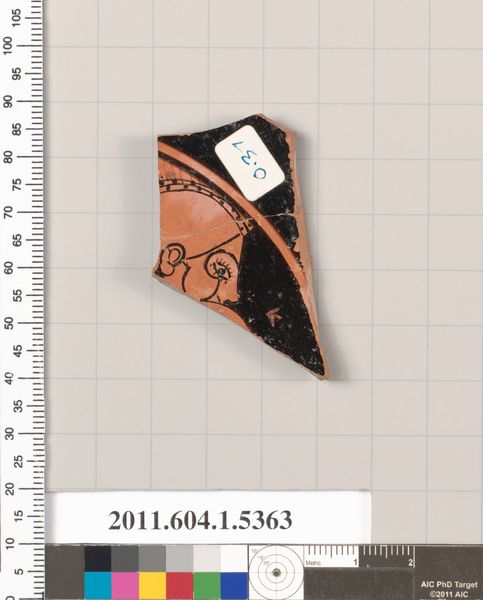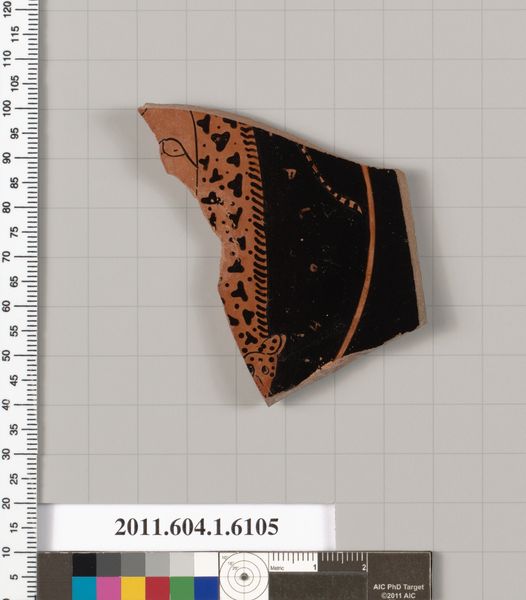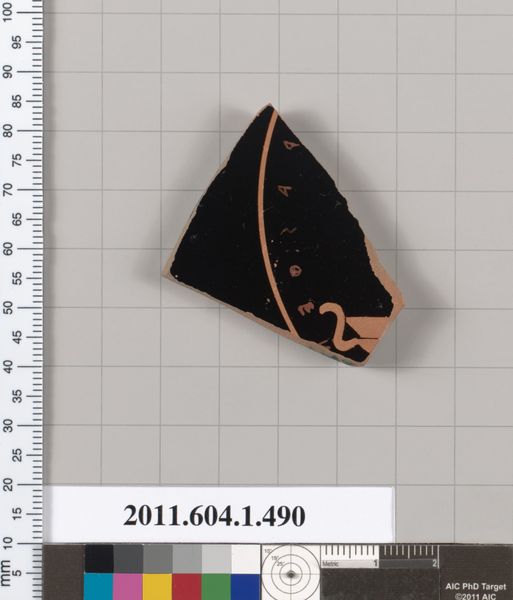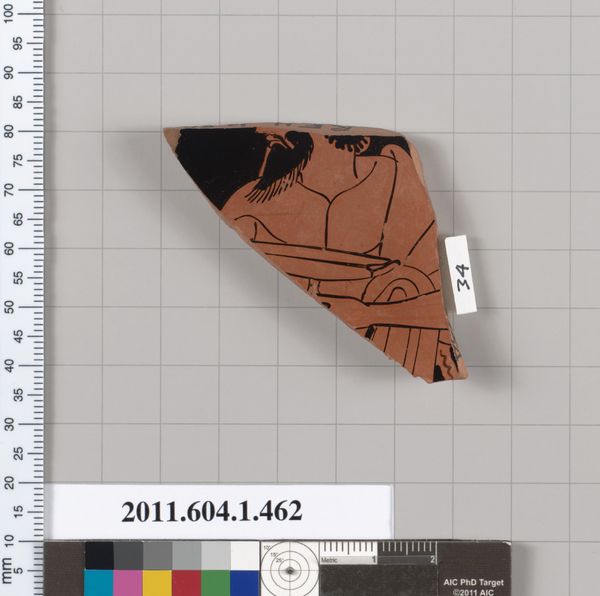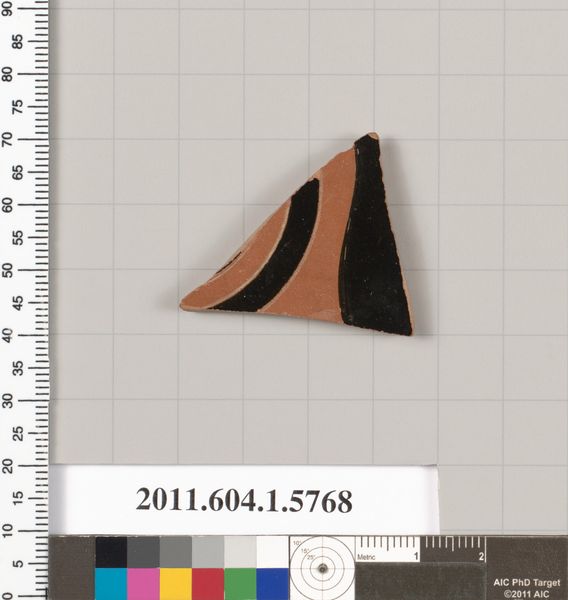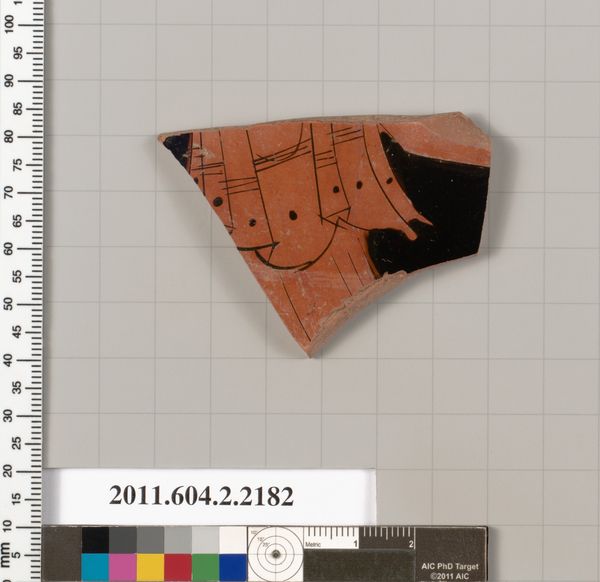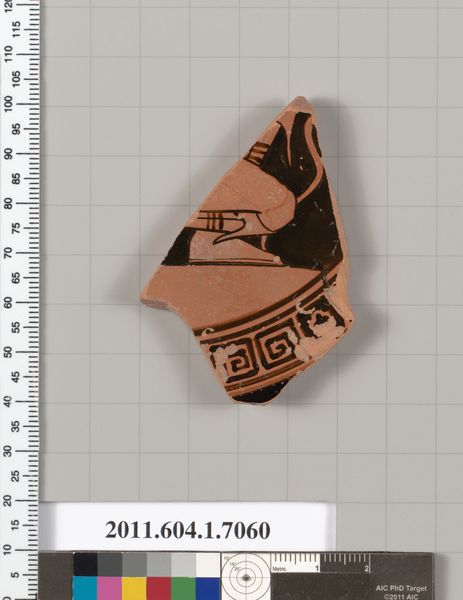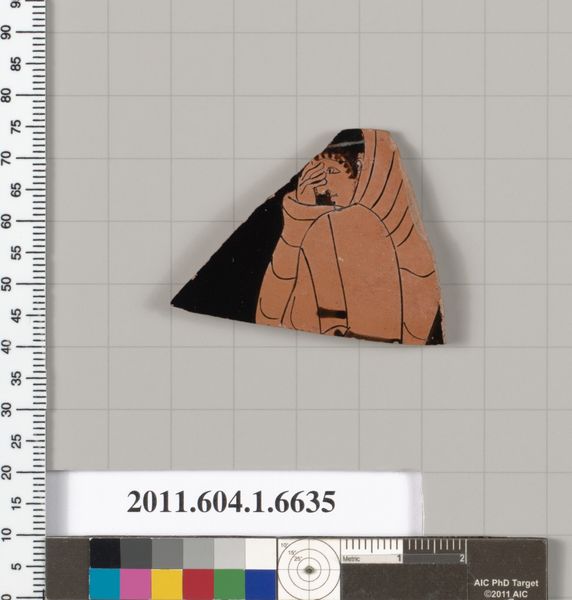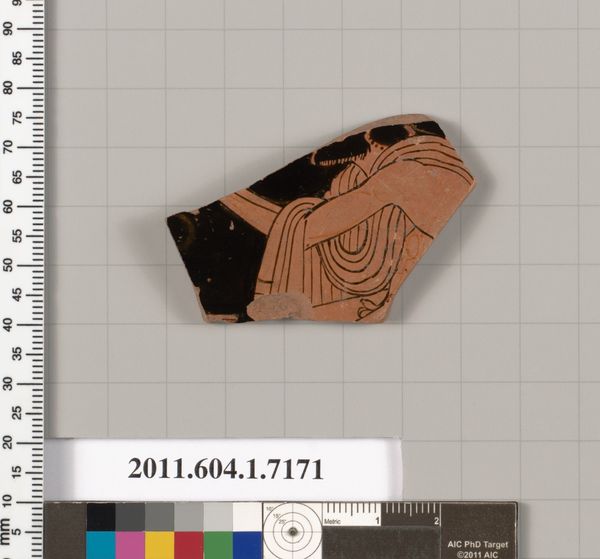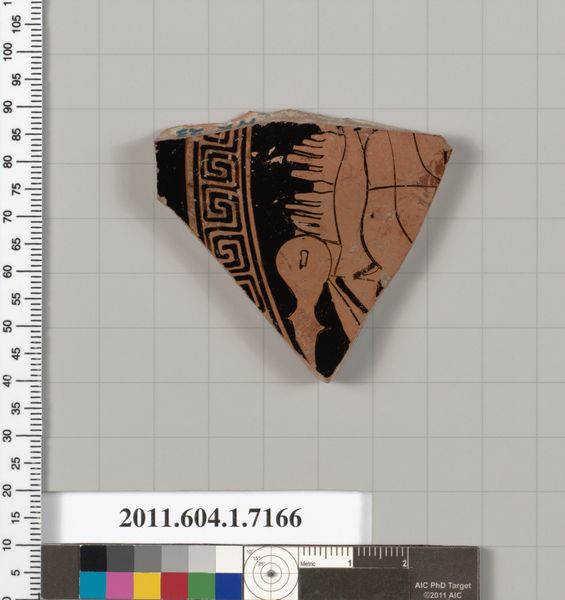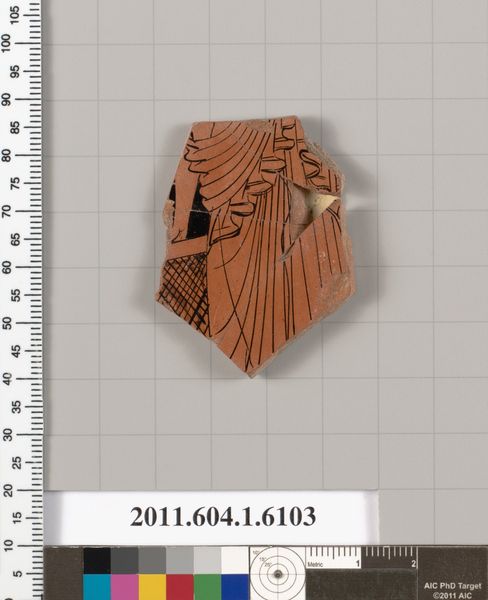
drawing, ceramic
#
drawing
#
greek-and-roman-art
#
ceramic
#
vase
#
roman-art
#
geometric
#
ancient-mediterranean
Copyright: Public Domain
Editor: This is a fragment of a terracotta kylix, a drinking cup, made around 500 BC by Makron. It’s currently held at the Met. It's striking how even a small shard conveys such an impression of ancient life. How do you interpret this work, especially considering it's just a fragment? Curator: Precisely! Its fragmented nature actually amplifies its significance. This isn't just about appreciating aesthetic skill; it's about deconstructing power. Kylixes like this were used in symposia, exclusive male gatherings often tied to political power and philosophical discourse. Who was allowed to drink from these cups, and whose voices were amplified in these settings? Editor: That's a good point. I hadn’t thought about the context of the symposium itself. So, you are saying it gives hints about gender and class at that time? Curator: Absolutely. Even the imagery adorning these cups, often depicting myths or scenes of daily life, reflected and reinforced societal norms. What narratives were prioritized? Whose bodies were idealized or objectified? The very act of drinking becomes a ritualized performance of privilege. The patterns, too, they signify order, civilization as defined by that power structure. Editor: It's amazing how much information is embedded in one piece. Curator: Precisely. This fragment invites us to critically examine the legacy of ancient Greece, not just as a cradle of democracy, but also as a site of inequality and exclusion. Considering that the cups broke easily, might this one have shattered during a riotous, drunken episode, during an overturning of accepted behaviours? Editor: Thinking about it as an artifact connected to gender and political power gives me a fresh view on ancient Greek art. Curator: And perhaps, by acknowledging that complexity, we can use art history as a tool for social change today. It's more than just art; it is a tangible manifestation of power, which asks the pertinent questions: Whose power? and Power to do what?
Comments
No comments
Be the first to comment and join the conversation on the ultimate creative platform.
